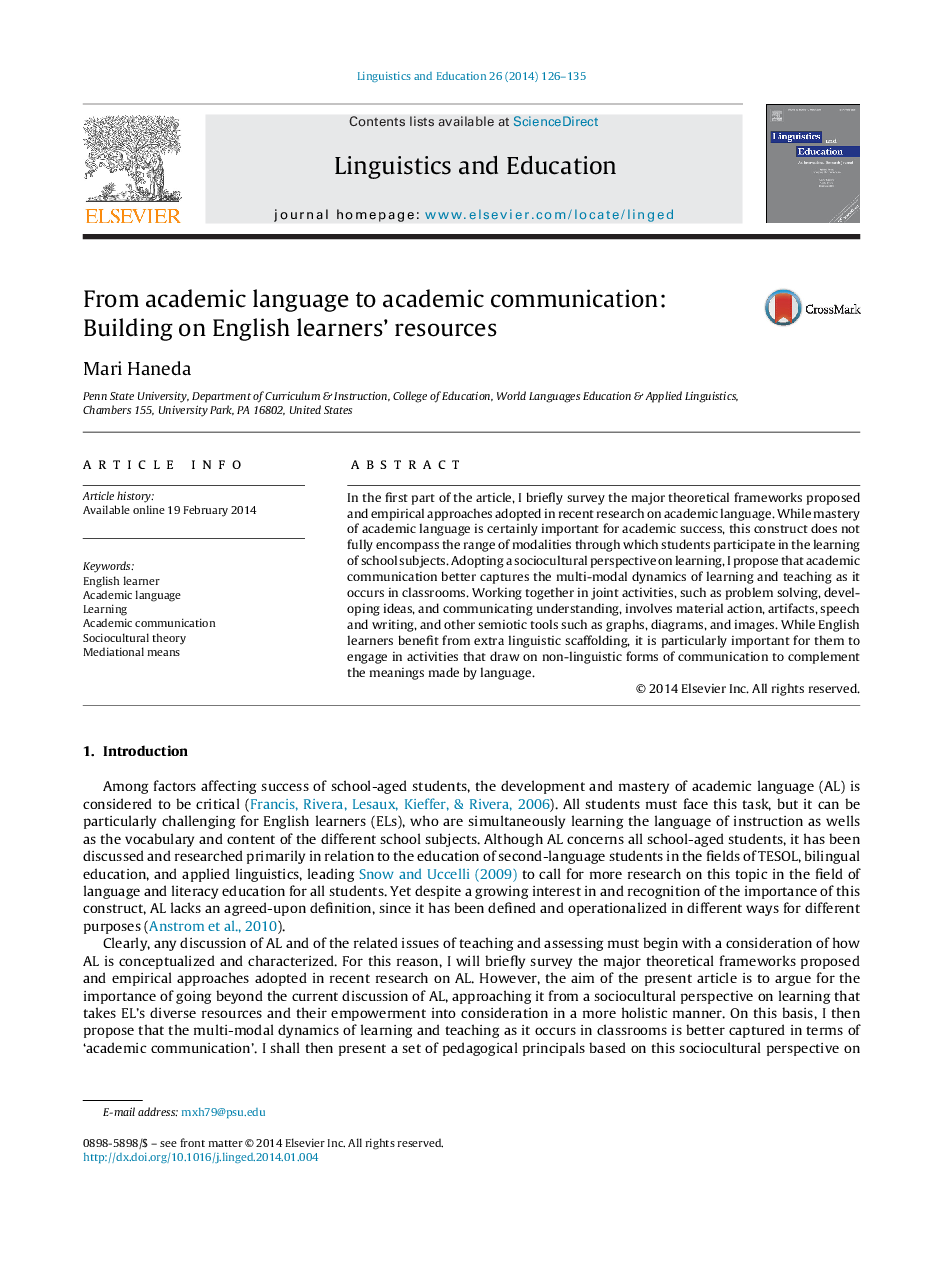| Article ID | Journal | Published Year | Pages | File Type |
|---|---|---|---|---|
| 366147 | Linguistics and Education | 2014 | 10 Pages |
•Reviews major theoretical frameworks and empirical approaches in recent research on academic language.•Academic language should not be treated as an end itself but as part of broad repertoires of academic communication.•‘Academic communication’ better captures the multi-modal dynamics of learning and teaching as it occurs in classrooms.•Instruction should build on ELs’ resources and use non-linguistic ‘scaffolding’ to complement meanings made by language.
In the first part of the article, I briefly survey the major theoretical frameworks proposed and empirical approaches adopted in recent research on academic language. While mastery of academic language is certainly important for academic success, this construct does not fully encompass the range of modalities through which students participate in the learning of school subjects. Adopting a sociocultural perspective on learning, I propose that academic communication better captures the multi-modal dynamics of learning and teaching as it occurs in classrooms. Working together in joint activities, such as problem solving, developing ideas, and communicating understanding, involves material action, artifacts, speech and writing, and other semiotic tools such as graphs, diagrams, and images. While English learners benefit from extra linguistic scaffolding, it is particularly important for them to engage in activities that draw on non-linguistic forms of communication to complement the meanings made by language.
